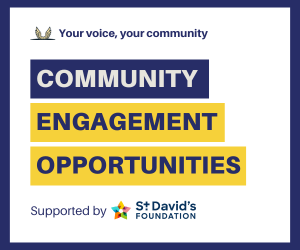Capital Metro sets out to better define Project Connect
Monday, June 17, 2019 by
Ryan Thornton The Capital Metropolitan Transportation Authority is moving into the second of six phases leading up to a possible 2020 referendum on Project Connect.
With preliminary engineering contracts already awarded for the two high-capacity routes and the board set to award contracts for most of the other lines later this month, Project Connect program manager Dave Couch told the Austin City Council Mobility Committee on Thursday that the agency is now settling into the design conceptualization phase.
In March, Couch told City Council that the “entire concept behind all of this is to maintain the through lanes.” Standing by his words, he said a big part of this next step will be deciding which sections of the high-capacity routes may need to run under or over traffic.
For the seven or so segments of the Orange Line with “very, very constrained” rights of way, Couch presented a number of solutions that would get around existing traffic lanes with some type of grade separation. In those areas, Couch said the city could spend the extra money to elevate the transit cars or spend even more to run either them or car traffic underground.
According to the desired options, the city could even choose to add more general lanes as part of the process. One of the presented sketches suggests that directing general traffic underground could free up space on the surface for transit lanes, bike lanes and two more lanes of general traffic.
Couch added that preserving traffic lanes is not the only reason to go up or down: Grade separation – whether by elevation, a bore tunnel like at Waller Creek or a wider underground transitway – would have the added benefit of minimizing interferences with the transit vehicles and allowing the system to run at a higher speed, he said.
But with long stretches of both high-capacity routes wide enough to accommodate transitways without eliminating any through lanes, grade separation could be too expensive for consideration. The presentation noted that the nearly three-mile span of South Congress Avenue from Oltorf Street to Stassney Lane already has enough room for transit, thanks to a continuous, two-way left-turn lane.
By making only minimal trade-offs in the street configuration, Couch said the solution there could be as simple as eliminating the left-turn lane and running transit in both directions through the center of the street.
Capital Metro is inviting public feedback in this first phase of the conceptualization and evaluation process. This phase will go until early October when the agency’s board will have another work session with Council laying out all of the major questions about mode and grade and leading into the next phase of more detailed analysis.
As part of that effort, the agency is hosting three Blue Line Corridor open house meetings this week in areas near the proposed route. The first takes place this afternoon from 4:30-6:30 p.m. at the Ruiz Library on Grove Boulevard. The second will be on Tuesday at Lee Elementary School and the third on Thursday at the Austin Community College Highland Campus, the route’s proposed northern terminus.
The agency also has a virtual Blue Line open house at its website where the public can view some basic information about the corridor and give feedback through June 28.
The evaluation phases are set to wrap up at the end of the year, leading to recommendation of locally preferred alternatives for the two high-capacity and seven transit priority routes in December. Those recommendations then go to the public for comment before heading to the Capital Metro board and Council at about the same time in spring 2020.
Photo courtesy of Capital Metro.
The Austin Monitor’s work is made possible by donations from the community. Though our reporting covers donors from time to time, we are careful to keep business and editorial efforts separate while maintaining transparency. A complete list of donors is available here, and our code of ethics is explained here.
You're a community leader
And we’re honored you look to us for serious, in-depth news. You know a strong community needs local and dedicated watchdog reporting. We’re here for you and that won’t change. Now will you take the powerful next step and support our nonprofit news organization?



